Christmas traditions we cherish were established during Queen Victoria’s reign (1837-1901). Others are as old as the ancient Roman Saturnalia celebration held on December 17, still others were traditions from the time of the Tudors. Decorating Christmas trees was one of the earliest and most important traditions. Germans brought cut fir branches into the house for their wonderful scent. Queen Charlotte (1744-1818) of Germany, who married George the III of England in 1760, was known by 1800 to decorate fir branches in the Queen’s Lodge at Windsor. These decorations may or may not have been complete trees. The British public was not yet aware of this practice.
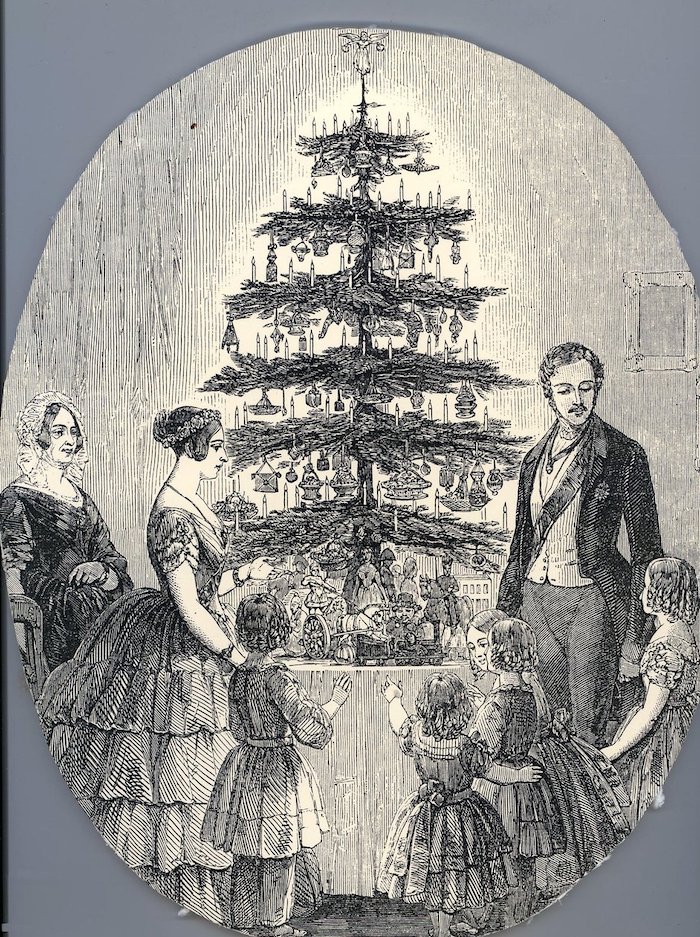
“Christmas with Queen Victoria and Prince Albert” (1848)
When Prince Albert of Germany married Victoria, he decorated a full tree. “Christmas with Queen Victoria and Prince Albert” (1848), was published in the Illustrated London News, and everyone emulated the Queen. By the end of the century, the Christmas tree had become one of the most important elements of the Christmas celebration. The wood-engraving by Joseph Lionel Williams is a depiction of Victoria and Albert standing by a table that holds a decorated tree and hand-made wood figures. Five of their girls look on with pleasure. The tree is decorated with lighted candles and hanging from it are highly decorated packages and an assortment of Christmas treats. The rich and the poor of England were able to decorate their trees with paper wrapped treats.
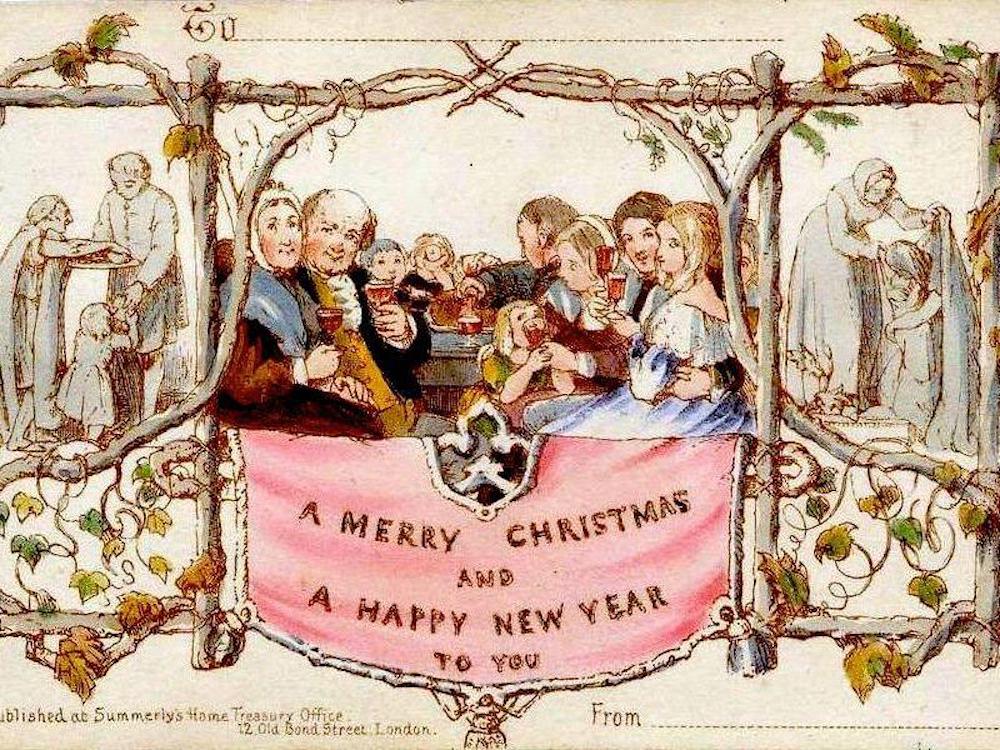
“First Christmas Card” (1843)
The decoration of a Christmas tree was only one of the new elements added to the celebration of Christmas. Sir Henry Cole, the first director of the South Kensington Museum, was too late to write his usual Christmas letter, and he commissioned artist John Calcott Horsley (1817-1903), a member of the Royal Academy, to design somethings for him to send. “First Christmas Card” (1843) depicts a merry middle-class family raising a glass to toast everyone as they sit down to a sumptuous Christmas dinner. A wooden grape arbor frames this central scene. At one side a poor man and his family share a meal. At the opposite side, charity is shown to a woman holding her baby. The spirit of Christmas is shared by all.
Sending Christmas cards became popular. Victoria encouraged her children to make cards, and poor children also began to make cards. Cole had1000 cards printed, and he sold those he did not send. The first illustrated newspaper was published by 1842, and the first printed books were available by 1863, among them was Dickens’s very popular A Christmas Carol. Advances in the printing industry included the ability to print hand-colored lithographs, and then machine-colored ones. The mass sprinting of wrapping paper, cards, books, and newspapers all became possible during the time.
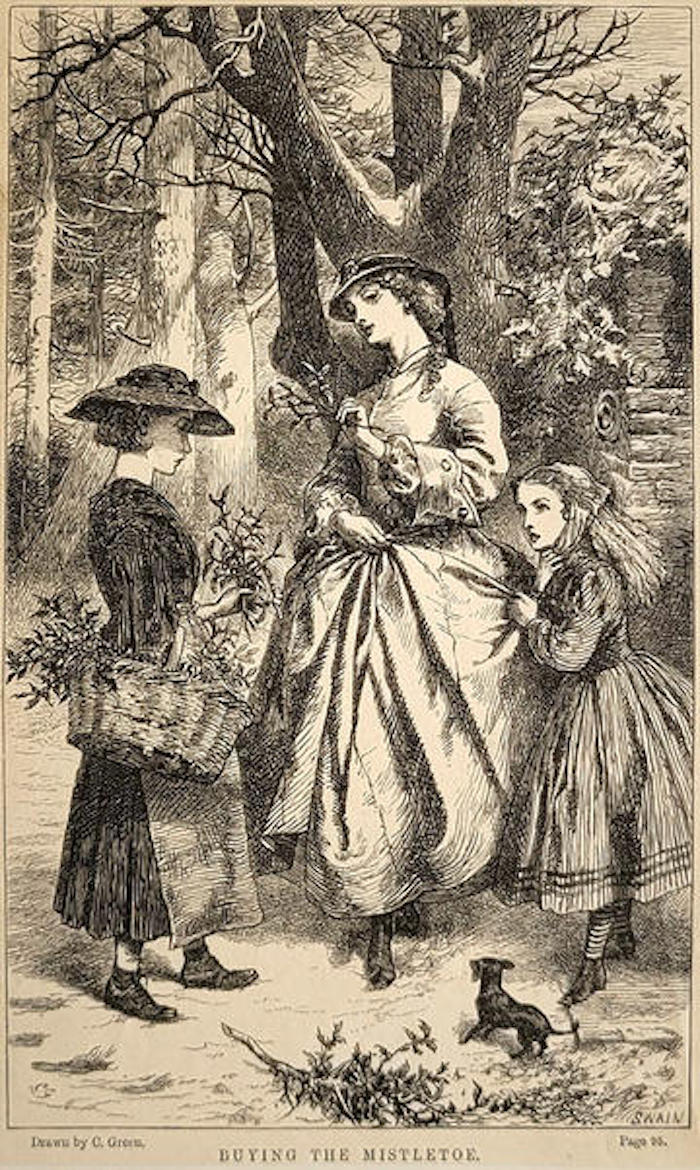
“Buying Mistletoe” (1850)
Mistletoe became popular in Victorian households by the 1870s. The green leaves and white berries were symbolic of fertility and romance. The berries represented male fertility. The Romans regarded mistletoe as symbolic of peace and love, and it was hung over doorways to protect the household. Druids and Celts also decorated with mistletoe since it was native to the British Isles and to Europe. “Buying Mistletoe” (1850), a Victorian print, shows a middle-class woman and her daughter purchasing mistletoe from a girl in the woods. Mistletoe is a parasite that grows on the tops of trees and remains green and white throughout the winter months. Popular with the serving-class, mistletoe became popular because it was possible for any man to kiss a girl under it. If the girl refused, she would have bad luck in finding a husband the following year.
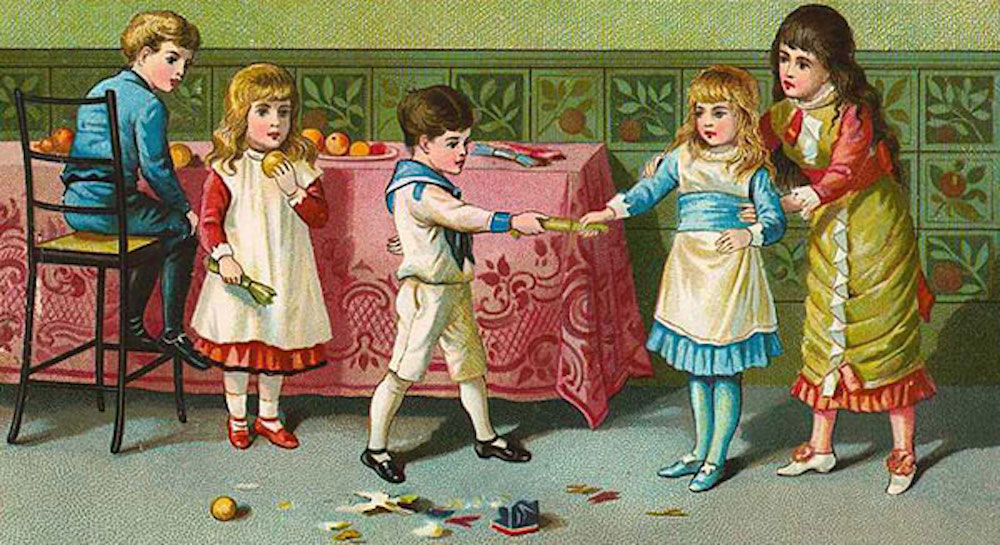
“Pulling Christmas Crackers”
Christmas Crackers were invented by Tom Smith sometime between 1845 and 1850. On a visit to Paris in 1840, he saw French bon bons made of sugared almonds wrapped in a paper twist. He brought the idea back to London. He made and tried to sell bon bons that included a message wrapped with the candy. They did not sell. As he sat by a fire, the idea came to add noise to the candy. He bought a recipe for fireworks that would make a small bang. He added a cardboard tube, a strip of paper treated with a small amount of gunpowder, a short sentiment, usually a joke, and some type of paper crown or hat. When both ends of the cracker were pulled, the strip of paper ignited the gun powder. He named them “Bangs of Expectation.” They delighted young and old.
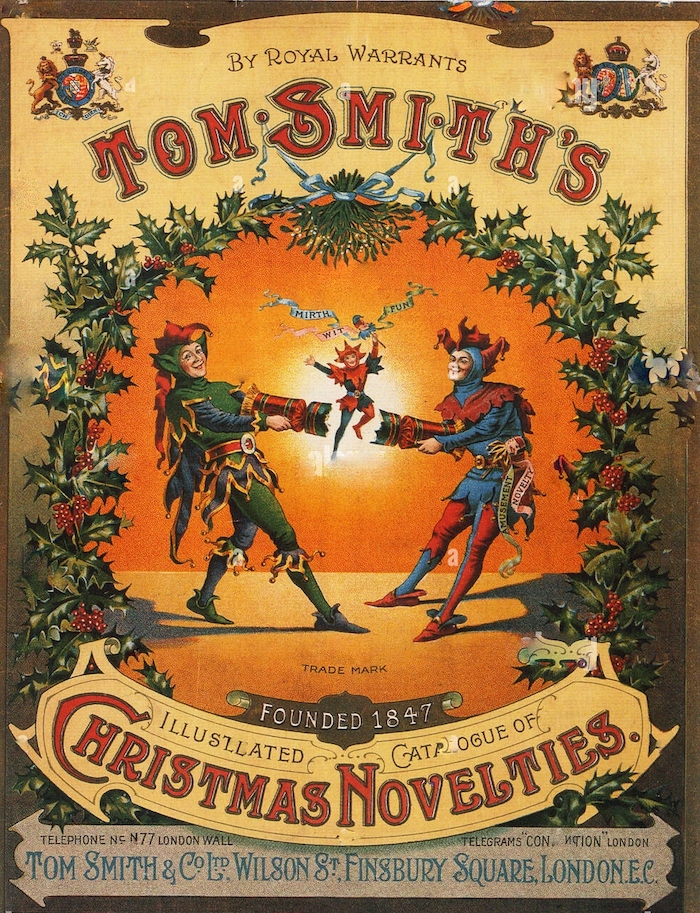
“By Royal Warrants Tom Smith’s Illustrated Catalogue of Christmas Novelties”
The Tom Smith company expanded its Christmas Novelties collection. It was appointed by the Queen in 1847 to be the official supplier of crackers and wrapping paper
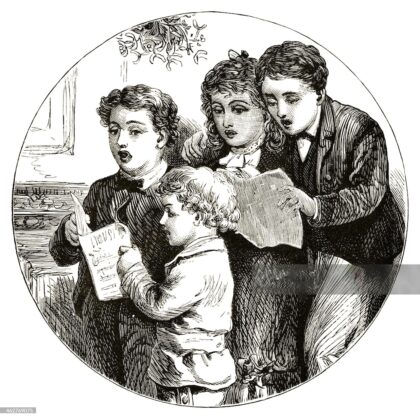
“Children Singing Christmas Carols” (1886)
The book Christmas Carols New and Old, by Henry Ramsden Bramley and Sir John Stainer, was published in 1871. “Children Singing Christmas Carols” (1886), a Christmas carol book for children, was published by Ward Lock and Company. Various artists illustrated the book. Victorian caroling originally was called wassailing, the word meaning be well and in good health. Carolers went about the town singing and receiving cups of wassail, a hot spicey drink, for their efforts. In later years, carolers received gifts they then distributed to the poor.
Singing songs and dancing in a circle in Europe is thousands of years old. Saturnalia is just one of the origins. The word carole is French. Carols were written for all four seasons. Christians in Rome sang them in Latin. The carols were not popular since most people did not understand the words. St Francis of Assisi wanted Christmas songs to be sung in native languages. He also introduced pageants. Christmas carols were first introduced to England in 1426 by a Shropshire chaplain. During the age of Cromwell and Puritanism, Christmas caroling was considered pagan, and the practice was outlawed. Caroling was revived in 1880, and new carols were written, such as “Good King Wenceslas,” “God Rest Ye Merry Gentlemen,” and “We Three Kings of Orient Are.”
WASSAIL!
Beverly Hall Smith was a professor of art history for 40 years. Since retiring to Chestertown with her husband Kurt in 2014, she has taught art history classes at WC-ALL and the Institute of Adult Learning, Centreville. An artist, she sometimes exhibits work at River Arts. She also paints sets for the Garfield Theater in Chestertown.



Write a Letter to the Editor on this Article
We encourage readers to offer their point of view on this article by submitting the following form. Editing is sometimes necessary and is done at the discretion of the editorial staff.